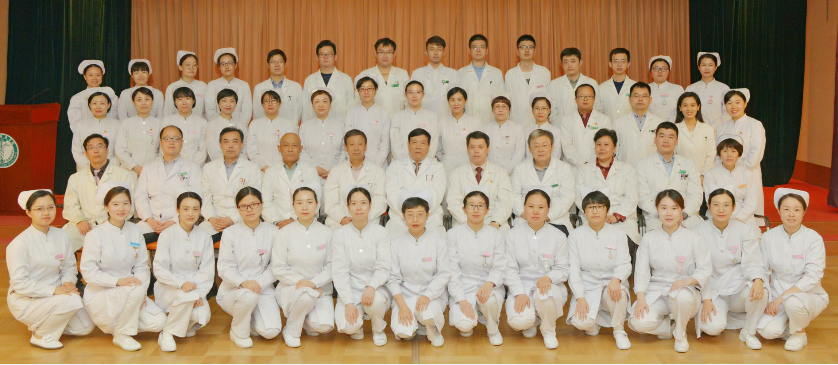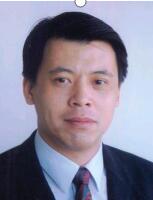
Department of Maxillary Facial and Otorhinolaryngology Head & Neck Surgery is one of the largest head and neck cancer units in China. It has been evolved from the department of head and neck surgery in Tianjin cancer hospital led by Professor Shuling Li who was one of the founders in head and neck cancer field in China.
Surgery treatments of tumor in maxillary facial, otorhinolaryngology and thyroid gland area are the specific features in our unit. In addition, reconstruction for surgery induced defects is the routine used technique. There are around 1700 cases for operations per year. Among them, more than 1/3 patients come from all over the China,less than 2/3 patients are from Tianjin city in which population are 12,000, 000.
Personnel Structure of department
In Department of Maxillary Facial and Otorhinolaryngology Head & Neck Surgery, there are three Consultant Surgeons, four senior Surgeons, two attending doctors and 6 residents, including six with PhD & MD, and 10 with MD, 2 master instructors.
In our department, routine operations are following
Resection for various benign and alignant thyroid tumors;
Modified neck dissection for thyroid cancer;
Total laryngectomy and voice reconstruction;
Various partial laryngectomies;
Radical neck dissection;
Hypopharyngeal resection and reconstruction of tumor-induced surgical defect;
Resection of saliva tumor;
Radical resection of maxillary-facial tumor and various flaps to reconstruction
with microsurgery technique;
Operations for laryngeal benign and early tumor(with laser);
Endoscope operation for nasal cavity and sinuses;
Free flap reconstruction for giant surgical defect;
Chemotherapy for head and neck malignant tumors.
Special technique for carotid body tumor
In addition, the technique for resection of carotid body tumor or tumor
involving carotid body, artery reconstruction belongs to the top class in China.
This is a breakthrough to traditional concept that tumor involving in carotid
body is forbidden to do operation.
One of Largest head and neck tumor training center in China
Every year, our department receives doctors for training in head and neck surgery field from all of China. The trainees join daily clinic works and, especially, operations.
Medical Task Completed in 2010
In-patient Revenue: ¥34,000,000
Amount of Out-patients: 19,000 cases
Amount of In-patients:1,800 cases
International cooperation relationship has been established:
Maxillary Facial and Otorhinolaryngology Head & Neck Symposium/or microsurgery training course have been taken once two years between/or combination with:
Swedish Uppsala University Hospital
Australia Deakin University
With open-minded spirit, we welcome the ones or units who wish to establish scientific relationship both in clinic research and clinic work to join us. International clinic trainees are welcome as well.
Scientific Research Projects in the Last Three Year
STAT3 regulate tongue squamous cell carcinoma chemo-sensitivity via influencing miR-21
Papers published during last five years
1. Cheng, JP. Ekberg, T., Engström, M., Nestor, M., Jensen, HJ. Tolmachev, V. and Anniko, M. (2007) Radioimmunotherapy with 211Astatine, Using Chimeric Monoclonal Antibody U36 in Head and Neck Squamous Cell Carcinoma. Laryngoscope 117 pp.1013—1018
2. Xuan Zhou, Chunsheng Kang, Peiyu Pu. MicroRNA and Brain Tumors. Chinese Journal of Clinical Oncology, 2007, 4:355-359.
3. Wu Yansheng Zhang Lun Wang Xudong et al Multivariate Regression Analysis of Papillary Thyroid Carcinoma Prognosis.Chinese journal of clinical oncology. 34(22), 2007,1294-1297
4. Wu yansheng, Wang xudong, Zhang wenchao,etc.Operation Strategy for Follicular Thyroid Carcinoma,Chinese journal of cancer.27(2)2008,170-173
5. Wu yansheng, Liu jie,Wang xudong .Expression and Clinical Significance of CXCR4 in Papillary Thyroid Cancer. Chinese journal of clinical oncology. 36(9), 2009,503-506
6. Zhang WC, Cheng, JP, Li Q, Zhang L, Wang XD, Anniko, M.(2009) Clinical and pathological analysis of malignant carotid body tumour: areport of nine cases Acta Oto-Laryngologica, 2009; 129: 1320_1325
7. Zhang L, Cheng, JP, Zhang WC, Li W, Anniko M.(2010) Reconstruction of defects following surgery for hypopharyngeal carcinoma using artificial biological material. Acta Oto-Laryngologica.130: 1293–1299
8. Xuan Zhou, Yu Ren, Lynette Moore, Mei Mei, Yongping You, Peng Xu, Baoli Wang, Guangxiu Wang, Zhifan Jia, Peiyu Pu, Wei Zhang and Chunsheng Kang. Downregulation of miR-21 inhibits EGFR pathway and suppresses the growth of human glioblastoma cells independent of PTEN status. Laboratory Investigation. 2010,90 (2):144-55.
9. Xuan Zhou, Ren Y, Han L, Mei M, Xu P, Zhang CZ, Wang GX, Jia ZF, Pu PY, Kang CS. Role of the AKT pathway in microRNA expression of human U251 glioblastoma cells. Int J Oncol. 2010,36(3):665-72.
10. Zhou X, Zhang J, Jia Q, Ren Y, Wang Y, Shi L, Liu N, Wang G, Pu P, You Y, Kang C.Reduction of miR-21 induces glioma cell apoptosis via activating caspase 9 and 3. Oncol Rep. 2010,24(1):195-201.
11. Ren Y, Xuan Zhou (equal author), Mei M, Yuan XB, Han L, Wang GX, Jia ZF, Xu P, Pu PY, Kang CS. MicroRNA-21 inhibitor sensitizes human glioblastoma cells U251 (PTEN-mutant) and LN229 (PTEN-wild type) to taxol. BMC Cancer.2010,10(1):27.(IF=2.736)
12. Han L, Zhang A, Zhou X (equal author), Xu P, Wang GX, Pu PY, Kang CS. Down regulation of Dicer enhances tumor cell proliferation and invasion. Int J Oncol. 2010; 37(2): 299-305.
